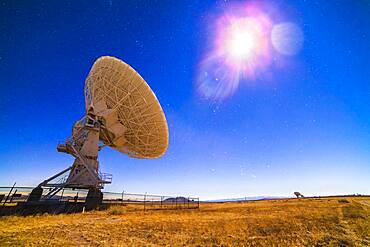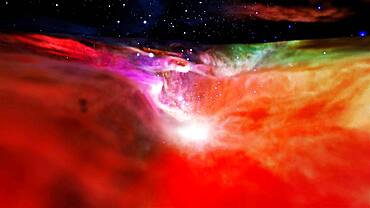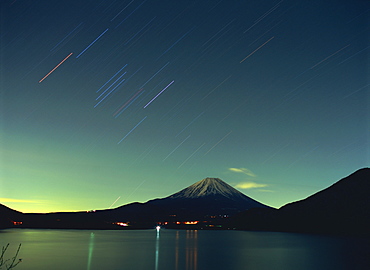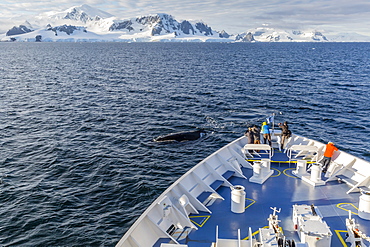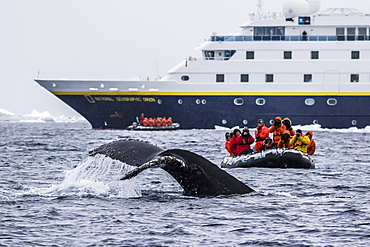Recent searches
Loading...
832-396706 - Diffuse Emission Nebula M42, Orion Nebula, Messier 42, in the constellation Orion with molecular cloud of hydrogen and oxygen ions, Bavaria, Germany, Europe
1350-147 - Orion and the winter sky, at left, and a swirl of colourful aurora over the Churchill Northern Studies Centre, in a display on February 11, 2018. People from the first Learning Vacations group of the season are shooting the Lights.
1350-89 - The Horsehead Nebula, B33, below the Belt of Orion and the star Alnitak, along with the bright Flame Nebula, NGC 2024, to the left of Alnitak. Many other bright reflection nebulas populate the field, such as NGC 2023 just left of the Horsehead itself. The quintuple star system Sigma Orionis is right of the Horsehead. The dark Horsehead is set against the bright streak of the emission nebula IC 434.
1350-27 - The nebulas of Orion in the Belt and Sword of Orion area. Including M42, Orion Nebula 9below centre), Barnard's Loop (at left), M78 (small reflection nebula above centre), Horsehead Nebula (centre) and NGC 2024 (above Horsehead). There is faint reflection nebulosity at right -- the frame does not extend right far enough to show the Witchhead Nebula near Rigel.
1350-149 - Orion and Sirius rising over the Peloncillo Mountains of southwest New Mexico, on a clear night in December in the early evening. The Belt stars of Orion point down to Sirius, the Dog Star.
1350-24 - The Orion Nebula complex consisting of M42, M43 and the reflection nebula area known as the Running Man Nebula, NGC 1973-5-7. NGC 1981 is the blue star cluster at top north edge. North is up, though in the sky from Australia where this was shot the object appeared upside down compared to this northern-centric view.
1350-41 - One of the 27 antennas of the Very Large Array (VLA) radio telescope complex in New Mexico (with others in the distance at lower right) illuminated by moonlight, on December 13, 2013, peak night for the Geminid meteor shower. A single exposure of 30 seconds with the Rokinon 14mm lens at f/2.8 and Canon 5D MkII at ISO 800. Orion is rising a lower centre. The Moon is the bright object at upper right. The Pleiades and Hyades are above centre.
1350-67 - A demo image with the Orion 80mm CF Apo and Celestron AVX mount, with 3 x 8 minute and 3 x 6 minutes, at ISO 1600 with Canon 6D MkII plus shorter 3 x 2 minute and 3 x 1 minute exposures blended in with luminosity masks. Guided with the Orion Starshoot and Orion finderscope, using PHD2, with a lot of wild excursions in the guiding.
1350-79 - The Belt and Sword region of Orion, with the Orion Nebula, Messiesr 42 and 43, at bottom. Below the left star of the Belt, Alnitak, is the famous Horsehead Nebula, while above it is NGC 2024, aka the Flame Nebula. At very top left is Messier 78, while part of Barnard's Loop arc across the field at left. The field is filled with other faint red emission and blue reflection nebulas. The large loose open cluster Collinder 70 surrounds the middle star of the Belt, Alnilam.
1350-94 - The Orion Nebula, M42 and M43, with surrounding associated nebula and star clusters, such as the Running Man Nebula above (NGC 1975) and blue star cluster above it, NGC 1981.
1350-1356 - Chota and his mural `Orion Operation´, Street art, graffiti, Comuna 13, Medellín, Colombia
1350-1348 - `Orion operation´ by Chota, Street art, mural, graffiti, Comuna 13, Medellín, Colombia
1350-47 - This is the Belt of Orion with its three blue stars across the top of the frame (L to R: Alnitak, Alnilam, and Mintaka), with the iconic Horsehead Nebula (aka B33) below Alnitak, with the dark Horsehead set against the bright nebula IC 434, aka Orion's Dagger. The pinkish nebula above Alnitak is NGC 2024, the Flame Nebula. The small blue reflection nebula left of the Horsehead is NGC 2023, with smaller IC 435 to the left of it. The field is filled with the large open cluster Collinder 70. The multiple star at bottom left of centre is Sigma Orionis. Many other smaller bits of reflection nebulas populate the field in and around the Belt.
1350-73 - Exiting the narrow Trollfjord by searchlight and under moonlight, on the northbound voyage of the Hurtigruten ferry ship the ms Trollfjord, on October 15, 2019. Capella is at top; Betelgeuse and Orion are rising at centre at the mouth of the fjord; Aldebaran is partly in cloud left of the Moon.
1350-23 - Orion Nebula region with NGC1973-7. Stack of two 10-minute exposures + stack of 30s and 1min exposure for retaining bright core deail. Blended with Normal @ 85% but erasing all of short exposure layer except for core.
1350-108 - A mosaic of the Sword and Belt region of Orion the Hunter, showing the diverse array of colourful nebulas in the area, including: curving Barnard's Loop, the Horsehead Nebula below the left star of the Belt, Alnitak, and the Orion Nebula itself as the bright region in the Sword.
1350-137 - A horizon-to-zenith panorama of the winter consellations on a March evening as they set into the southwest. Orion is at bottom centre, with his Belt pointing down to Canis Major and up to Taurus. Gemini and Auriga are at top, in this case near the zenith overhead. The bright star clusters, M44, the Beehive, (at left) and M45, the Pleiades, (at right) flank the Milky Way. M45 is embedded in the Zodiacal Light. The star clusters M35 in Gemini and M41 in Canis Major are also visible as diffuse spots, as are several other star clusters. A couple of satellite trails are visible.
1350-57 - Orion and the winter stars and constellations rising in the light of a first quarter Moon on December 3, 2019. The vertical format sweeps up the Milky Way.
1350-152 - The constellation of Orion the Hunter, at right, and his two Hunting Dogs and their brightest stars: Procyon in Canis Minor (at left) and Sirius in Canis Major (at bottom).
1350-11 - The Belt of Orion with the Horsehead Nebula at botton, the dark nebula set in the bright emission nebula IC 434. The nebula at left of the Zeta Orionis (aka Alnitak) is the Flame Nebula, NGC 2024. The reflection nebula at upper left is the M78 complex with NGC 2071. The other Belt stars are Alnilan (centre) and Mintaka (upper right). The field contains a wealth of other blue reflection and red emission nebulas.
1116-47138 - A No Smoking Sign On A Painted Red Wooden Wall, Orion, Alberta, Canada
1112-2988 - Humpback whale (Megaptera novaeangliae) off the bow of the Lindblad Expeditions ship National Geographic Orion, Cuverville Island, Antarctica, Polar Regions
1112-2989 - Humpback whale diving during Zodiac cruise from the Lindblad Expeditions ship National Geographic Orion, Weddell Sea, Antarctica, Polar Regions
83-12899 - Glowing active volcanic crater of Volcan Telica on a starry night, with the Milky Way, Orion and the Pleiades, Leon, Nicaragua, Central America
817-361937 - Statue on the top of Orion Fountain, Piazza Del Duomo, Messina, Sicily, Italy
755-13 - Swayambhunath (Swayambhu) (Monkey Temple) Buddhist stupa on a hill overlooking Kathmandu, taken at dawn with Orion in the sky behind the prayer flags, Kathmandu, UNESCO World Heritage Site, Nepal, Asia
755-10 - The constellation of Orion, in sky at bottom right and the five tiered pagoda roof of the Kumbeshwar temple, dating from 1392, one of two five tiered temples in the valley. Patan, Kathmandu Valley, UNESCO World Heritage Site, Nepal, Asia
755-6 - Orion in sky at dawn above triple roofed pagoda temple in foreground and Indrapur temple to the right, Durbar Square, Kathmandu, UNESCO World Heritage Site, Nepal, Asia
755-24 - The constellation of Orion in the sky at dawn above the Hariti Mandir temple, dedicated to the goddess of smallpox, worshipped by Hindus and Buddhists, Swayambhunath, Kathmandu, Nepal, Asia
You reached the end of search results

















